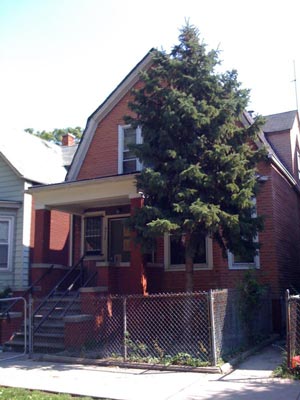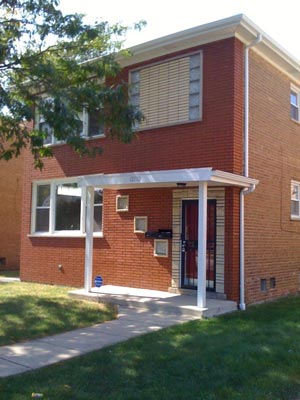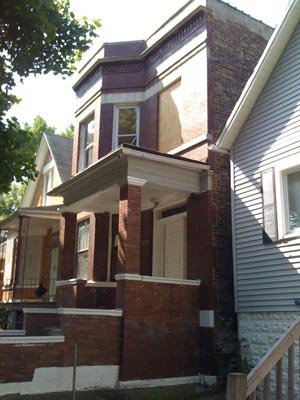|
|
|
|
|
|
This is one of the rougher properties we have, but somebody’s going to turn it around,” Kristian Harris said as we stood in the bashed-up bathroom of the house at 6027 South Marshfield in Englewood. The plumbing fixtures were all out of order, the floors and walls were beaten up, and the acrid smell of mold hung in every room. The house, a brick “barn-roof” bungalow that must have once been a pleasant home, is now only a shell. It’s on the market for $12,000. “An investor buyer will snap this up soon,” said Harris, an agent for the Chicago-based Rising Realty, which specializes in foreclosed properties. “The investors are taking anything that’s under $50,000, and right now, there’s quite a bit under $50,000.”
Last week I looked at how the foreclosure crisis has affected six Chicago neighborhoods and 16 suburbs, lowering average house-sale prices there to below what they were in 1994. (Prices in those 22 communities and 266 others are detailed in the real-estate charts in Chicago’s October issue; I discuss the charts—which compare current house prices with last year’s prices and prices in 1994—with Rochelle Vayo Adkinson, the host of CLTV’s HomesPlus, here.) This week I am looking at who is buying the foreclosures in those areas.
Harris has worked with some “end users” (people who are buying homes for themselves), but he’s getting a lot more action from investors, whose identities he won’t disclose. Harris says that he is currently scouting foreclosed properties for an investor group that wants to buy about 15 homes. He also knows an individual investor who has bought six or seven foreclosures this year; his goal is ten. Most of these “bulk-buyers” plan to rehab the homes and put them on the rental market. “Even if the cash flow isn’t great,” Harris says, “the tax benefit of having rental property is fantastic.”
But the benefit to the community where those foreclosures are concentrated is not always so great. There are investors who “take a long-term, 20-year view” of the properties and plan to maintain them well, says Bert Herzog, the village administrator for Dolton. “The majority of the people acquiring [foreclosures in Dolton] are that kind of investor,” he says.
Unfortunately, that’s not always the case. “The investor’s intent is probably to minimally improve the property, get it to pass inspection and meet code, and not do anything more,” says Ed Paesel, the executive director of the South Suburban Mayors and Managers Association (SSMMA). That’s another reason SSMMA has been working to secure federal stimulus funds (as I discussed in last week’s blog as well). With more money in hand, municipalities could become major players in the bulk-buying phenomenon. The rationale is that community leaders will have a vested interest in restoring those formerly derelict houses above code, perhaps even using them to stabilize and improve the local housing stock.
Whether bought by investors or by homeowners, the foreclosed properties that sell often go at such rock-bottom prices that they exert a lot of downward pull on the area’s average price. In Roseland, a two-flat built in 1962 at 12152 South Michigan Avenue was sold in April for $50,000; it had sold in 2003 for $175,000. And a century-old brick two-flat at 6944 South Carpenter Street in the Hamilton Park section of Englewood went for $9,000 in June. In 1996, that home had sold for $40,000—or more than four times its price in 2009. It gets worse: in 2004, the property was sold for $131,500—or nearly 15 times its current price.






